Raspberries carry out a lot of nutrients during the process of growth and development. Therefore, it is fed several times during the season. The crop responds very well to fertilizing and gives a noticeable increase in yield. Without them, the berries become smaller, and replacement shoots develop worse.
| Content:
|
|
Raspberries, which are grown on poor soil, need feeding the most. |
Applying fertilizers when planting seedlings
Depends on the time of planting raspberries: spring or autumn.
Raspberries are nitrophilous and, regardless of the time of planting, manure is always applied. Fresh manure is not used; compost, rotted or at least semi-rotted manure is used, with a degree of decomposition of at least 40%.
When planting in rows, manure is applied at the rate of 1 bucket per 1 m of trench. In its absence, they use hay that is beginning to rot; it releases a lot of nitrogen, so that the seedlings have enough for the first year of life. On neutral soils this is enough.
On acidic soils, use ash (1 cup/m of trench). Or in the spring, before planting, close up the fluff (at a pH below 5.4). Since it is added before planting the seedlings, the calculation is made per 1 m2, and not per meter of trench.
| Soil composition | Application rates g/m2 | |
| pH 4.1-5 | pH 5.1-5.5 | |
| Loamy | 600 | 250-300 |
| Clayey | 700 | 500 |
| Sandy loam | 250-300 | 100-150 |
Ash is preferable, it acts more gently and, in addition, it contains a large number of microelements, which raspberries really need.
On highly alkaline soils, add peat (1 bucket/m2). It also needs to be applied in advance over the area, and not directly into the trench at the time of planting.
|
Before planting seedlings, the soil is fertilized with rotted manure. |
Don't forget to read:
Rules for planting and caring for raspberries in open ground ⇒
When growing in clumps, peat or fluff is also added several months before planting. When planting, manure is added to each planting hole (1/3-1/2 bucket depending on the size of the seedling).
During spring planting, if the root system is not sufficiently developed, immediately after the seedling is planted, water it with root formation stimulants (Kornevin, Kornerost, Heteroauxin).
The top of the planted seedlings is pinched to 15-20 cm. In this case, the root system will develop well and will fully meet the needs of the growing bush.
Feeding seedlings after planting
If all the necessary fertilizers were applied during planting, then the raspberries do not need fertilizing in the first year of life. If organic matter was not added, then the crop is watered with manure infusion: 1 glass of infusion per 10 liters of water, application rate is 3-5 liters per seedling. Fertilizing is carried out after abundant watering. When planting raspberries in spring, feed them when the seedling produces 2-3 new leaves.
If there is no manure, feed with nettle infusion: 2-3 glasses of infusion per 10 liters of water. The consumption rate is 5-7 liters per bush. You can also use humates by preparing the solution according to the instructions.
In the absence of organic matter, seedlings are fed with mineral fertilizers: urea, ammonium nitrate, sodium nitrate, etc.
On soils prone to acidification or alkalization, fertilizers are used that do not cause an increase in such processes.
- On acidic soils, calcium and sodium nitrate are used; they slightly alkalize the fertile layer.
- For alkaline ones, urea and ammonium nitrate are used.
- Ammonium sulfate strongly acidifies the soil, so it is used where alkalinity is high to quickly reduce it.
The ammonia solution, beloved by many summer residents, also leads to slight acidification of the fertile layer.
Feeding a fruit-bearing plot
Basic provisions.
- Raspberries need a lot of nitrogen. Without it, the berries become smaller and the plantings quickly degenerate.The crop needs fertilizer especially in the first half of summer. In the second half of summer, the dose of nitrogen fertilizers is significantly reduced or, if manure was applied, completely removed from the fertilizer. The use of nitrogen at this time causes strong growth of shoots, and they do not have time to ripen before frost. In addition, the frost resistance of the crop is reduced.
- In addition to nitrogen, the crop needs potassium and phosphorus. Of course, much less of them is required, but without them it is impossible to grow full-fledged plantations and obtain high yields. Potassium is needed a little more than phosphorus.
- The crop is demanding of microelements, so they are added to all feedings.
- Before any fertilizing, the crop is well watered so as not to cause burns to the roots.
Without fertilizing, the raspberries become smaller, the fruiting time decreases, and in general the lifespan of the bush decreases.
Watch a video about spring feeding of raspberries:
Spring feeding of raspberries
In spring, raspberries need nitrogen fertilizing for active growth. Manure, weed infusion, humates or nitrogen-containing mineral fertilizers are used.
Manure
Any manure can be used, including fresh. Use cow manure, goat or rabbit manure diluted 1:10 or bird manure diluted 1:20. Fresh pig manure is usually not used because it contains a very high amount of nitrogen, which can kill raspberries. In case of urgent need, fresh pig manure is diluted into a barrel in a ratio of 1:100.
You can also use semi-rotted and well-rotted manure or compost, digging it around the perimeter of the plot during spring processing of raspberries. Application rate 1-1.5 buckets per 1 m2 plantings.
In regions where early summer frosts occur (until mid-June), manure is fed only when the threat of their occurrence has passed.
Fertilizing raspberries during flowering:
Weed infusion
Nettle is usually used for infusion. But you can also take other grass: dandelions, sow thistle and other weeds growing in the country. They are filled with water, left for several days, and the raspberries are fed. The solution is prepared 1:2. The consumption rate for one bush is 1.5-2 buckets. Fertilizing is done in late May-early June.
But since the concentration of nitrogen in the fertilizer is lower than in manure, a second feeding is given after 7-10 days.
|
An infusion of herbs serves as an excellent fertilizer not only for raspberries, but also for any other plants. |
Do not miss:
Humates
Humates are special substances obtained by processing raw materials with alkaline solutions. Peat, brown coal, and pulp industry waste are used as raw materials. When raw materials are processed with sodium alkalis, sodium humate is obtained, and with potassium alkalis, potassium humate is obtained. Humates obtained from peat are better than all others.
Humates are not fertilizers. The dosage of macroelements in them is very small and does not affect the development of plants. They are used in stressful situations: heat, prolonged rains, after a cold winter or winter with long thaws, when raspberries are difficult to grow, grow slowly and poorly. Humic acids improve the permeability of the cell membrane. As a result, the penetration of nutrients into the plant and its respiration improves.
Humates, although they are organic fertilizers, do not replace manure or weed infusion. After their use, 7-10 days later the raspberries are fed with organic matter.
Drugs from different manufacturers differ in dosage.The most effective are humates in a concentration of 0.01-0.03%. Dilute and use them according to the instructions.
Mineral fertilizers
Of course, it is better to add organic matter to the spring feeding of raspberries. But in its absence, mineral water is used.
The best nitrogen fertilizers for raspberries are ammonium and potassium nitrate. The latter is preferable; it also contains potassium, which the culture also needs. In wet spring, dry fertilizing is carried out, scattering saltpeter along the bushes and embedding it into the soil. In dry weather, the plantings are watered with a fertilizer solution.
In the absence of saltpeter, raspberries are fed with urea. But in addition to it you should add a potassium fertilizer that does not contain chlorine: potassium sulfate, potassium magnesium or ash.
Although nitrophoska and ammophoska contain nitrogen and potassium, they are not suitable for raspberries, since potassium is contained in the form of chloride, and raspberries do not like it.
How to feed raspberries during fruiting:
Summer feeding of raspberries during fruiting
At the beginning of fruiting Phosphorus-potassium fertilizers are applied to raspberries with the addition of microelements. The best of them is ash, it contains everything: potassium, phosphorus, and all the necessary microelements. It is better to do root liquid feeding. For 10 liters of water, 1-2 glasses of ash infusion, the consumption rate is a bucket per bush.
|
Ash is one of the best fertilizers for raspberries |
Do not miss:
In the absence of ash, feed with potassium sulfate + superphosphate with the addition of microelements (Agricola, Uniflor-micro or “fertilizer for berry crops”).
After fruiting cut out old branches and feed with a complete complex fertilizer (diammophoska, nitroammofoska, etc.). This is done to better prepare young shoots for winter.
In summer, it is better to fertilize with mineral fertilizers, since organic matter causes increased growth of shoots, and they do not ripen until cold weather.
The best fertilizer for raspberries in the summer is diammofoska. Firstly, it contains nitrogen in small quantities, which allows the shoots to grow sufficiently and ripen before the cold weather. Secondly, the fertilizer contains the most important microelements and does not need to be added additionally.
Any feeding of raspberries in spring and summer is carried out only after abundant watering!
Fertilizing raspberries in the fall:
Don't forget to read:
Autumn feeding
Autumn feeding of raspberries is carried out when the temperature reaches no higher than 7°C and the raspberries stop growing. Apply manure in a bucket to each bush. When applying in the fall in the spring, you can not apply it, but feed the crop with an infusion of weeds. If there is not enough phosphorus in the soil, then simple or double superphosphate is added. Everything is buried in the soil.
Feeding remontant raspberries
Remontant varieties, compared to ordinary raspberries, tolerate more nutrients, since they bear fruit twice a year and are quite intense. Their greatest need is for nitrogen; during fruiting, the need for microelements and potassium increases. But rhems require a small amount of phosphorus.
|
Remontant raspberry varieties require enhanced feeding |
Fertilizer application during planting
Remontant raspberry seedlings grow very quickly and can produce up to 1-2 cups of berries already in the year of planting. Therefore, they bring in everything necessary. Add 3 buckets of well-decomposed manure to the planting hole. Fresh manure is not used.In addition to it, add a glass of complex fertilizer with microelements.
The root system of rem is even more sensitive to chlorine ions than that of conventional varieties, so only those fertilizers that do not contain chlorine are used.
If the summer resident does not want to use mineral water, then after planting the seedlings are fed with an infusion of ash. 0.5 liters of ash are poured into 10 liters of water, left for 3-5 days, then 2-3 glasses of the solution are diluted in 10 liters of water and the seedlings are watered. Do not add ash in dry form, since planting can damage the roots. For better survival, plantings are watered with humates: 2-3 liters of working solution per bush.
If the seedlings bloomed in the year of planting, then they are additionally watered with weed infusion: 3-5 liters of diluted infusion per bush.
Feeding fruiting raspberries
Nitrogen fertilizing of remontant raspberries is carried out 2 times during the growing season.
If everything was introduced properly during planting, then they begin to feed remontant raspberries from the 2nd year, and on chernozems from the 3rd year.
In the fall, manure is applied (fresh, but only after the crop’s growing season has stopped), embedding it into the soil. If the phosphorus content in the soil is low, double superphosphate is added at a rate of 20-30 g per bush.
In the spring, in the first half of the growing season, nitrogen is given either in the form of an infusion of weeds or in the form of a mineral water: potassium or ammonium nitrate.
|
If remontant varieties are grown to produce one harvest, then fertilizing with nitrogen is done twice: in the spring at the beginning of the growing season to speed up the growth of shoots and at the beginning of summer. It is better to feed organic matter both times: in the spring, dig in manure, and in the summer, water the weeds with infusion. |
If raspberries produce 2 harvests a year, then after the first harvest they are given nitrogen, preferably in the form of mineral water.The fact is that mineral fertilizers cause a sharp growth of shoots, which, however, fades away after 1.5-2 months. Organic matter leads to longer growth and remontants do not have time to produce a full autumn harvest.
Along with nitrogen, potassium fertilizers and microelements are given. If fertilizing is done with potassium nitrate, then there is no need to add additional potassium. The best feeding for rhems after the first harvest is urea and ash.
Ash can be added either in dry form (half a liter jar per bush) or in the form of an infusion (2-2.5 cups of infusion per 10 liters of water).
Conclusion
Raspberries are demanding when it comes to fertilizing, especially nitrogen. But it is better not to overdo it, since a crop with an excess of the element in the soil is capable of accumulating it. In addition, nitrogen reduces disease resistance and frost resistance.
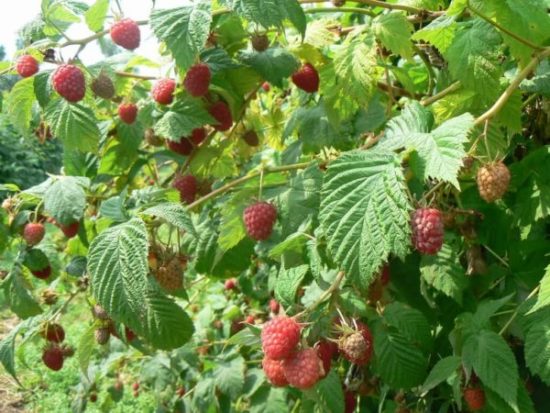
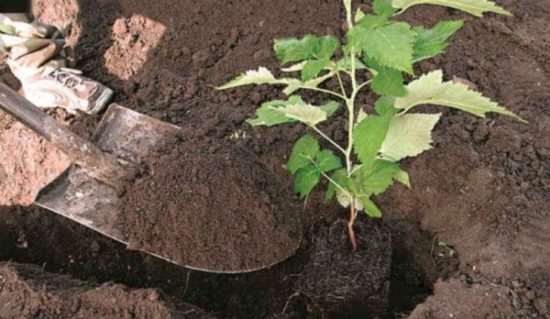

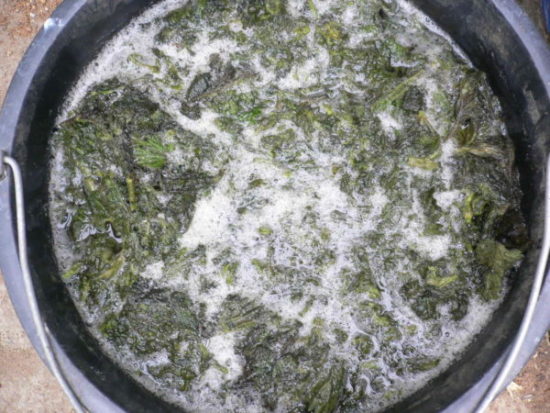
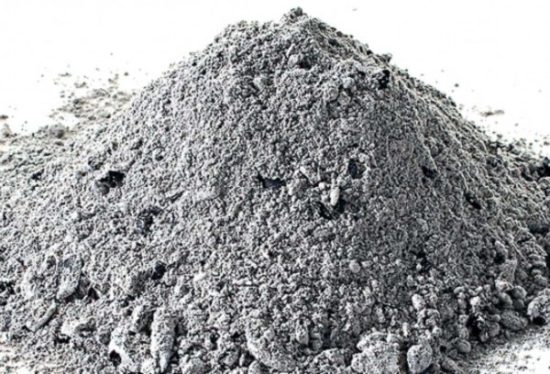
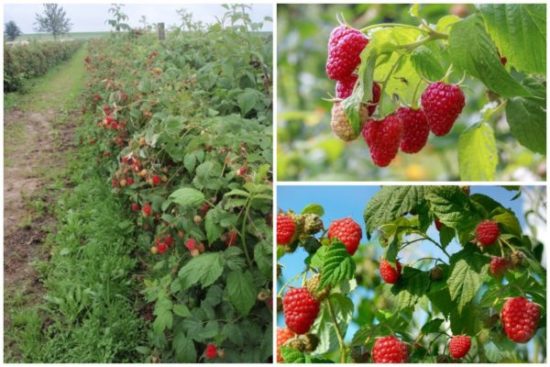
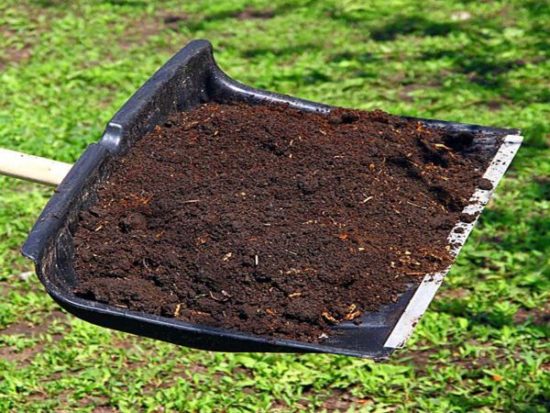

 CUCUMBERS NEVER GET SICK, I'VE BEEN USING ONLY THIS FOR 40 YEARS! I SHARE A SECRET WITH YOU, CUCUMBERS ARE LIKE THE PICTURE!
CUCUMBERS NEVER GET SICK, I'VE BEEN USING ONLY THIS FOR 40 YEARS! I SHARE A SECRET WITH YOU, CUCUMBERS ARE LIKE THE PICTURE! You can dig a bucket of potatoes from each bush. Do you think these are fairy tales? Watch the video
You can dig a bucket of potatoes from each bush. Do you think these are fairy tales? Watch the video
 How our fellow gardeners work in Korea. There is a lot to learn and just fun to watch.
How our fellow gardeners work in Korea. There is a lot to learn and just fun to watch. Eye trainer. The author claims that with daily viewing, vision is restored. They don't charge money for views.
Eye trainer. The author claims that with daily viewing, vision is restored. They don't charge money for views. A 3-ingredient cake recipe in 30 minutes is better than Napoleon. Simple and very tasty.
A 3-ingredient cake recipe in 30 minutes is better than Napoleon. Simple and very tasty. Therapeutic exercises for cervical osteochondrosis. A complete set of exercises.
Therapeutic exercises for cervical osteochondrosis. A complete set of exercises. Which indoor plants match your zodiac sign?
Which indoor plants match your zodiac sign? What about them? Excursion to German dachas.
What about them? Excursion to German dachas.